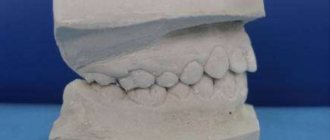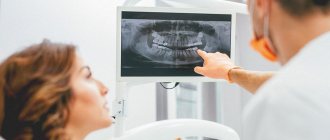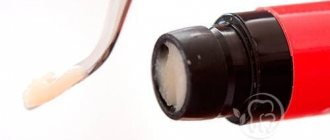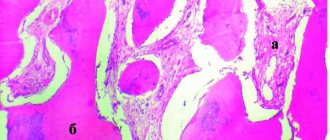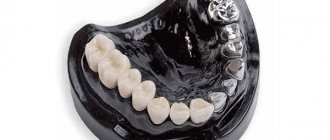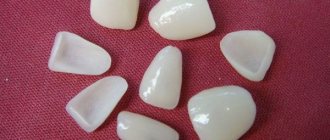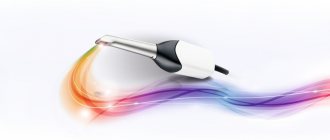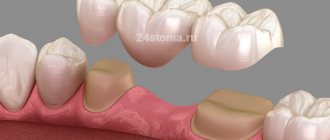When treating fractures in medicine, plaster casts are used to immobilize the limb, which is necessary for proper bone healing. The plaster cast is made from calcium sulfate, which is a white powder that is mixed with water and hardens very quickly, thereby ensuring reliable fixation of the limb.
Applying a plaster cast is a very responsible process, so this procedure should only be performed by a doctor, since an incorrectly applied plaster cast can cause serious harm to health and aggravate the injury.
Advantages of plastic gypsum compared to traditional
- Quick fix . You can change and fix the polymer bandage in 20-30 minutes at home.
- Simple modeling . The bandage takes on the required shape, making it suitable for fixing even hard-to-reach parts of the body and joints.
- Sturdy mount . The material ensures immobilization of the injured limb throughout the entire recovery period.
- Water resistance . The bandage can be wetted: take a full bath or shower, or swim.
- Safety . The product does not cause irritation, rashes, skin inflammation, or diaper rash.
- Bandwidth . It does not need to be removed to perform a control x-ray, computed tomography or magnetic resonance imaging.
- Wide selection of colors . The polymer bandage is available in different colors, which is especially important when applied to children.
Consequences of long-term rigid immobilization in the treatment of fractures
One of the most unique properties of the musculoskeletal system is its ability to “adapt” to different situations. Functional load helps to increase mass and strength. Lack of exercise leads to atrophy and weakness. The result of rigid immobilization for a long period was: muscle atrophy, shortening of the joint capsule, leading to stiffness of the joints; demineralization of bone mass, weakening of ligaments and tendons, and poor circulation. Thus, the consequence of long-term immobilization is a combination of atrophic processes in bone and muscle tissue - “fracture disease.” To do this, in order to reduce these complications to a minimum, the 3M company suggests using a combination of two materials: rigid Scotchast and semi-rigid Softcast.
Application of plastic plaster
You can apply a plastic cast to an adult’s or child’s arm, leg, ankle, and other parts of the body at home. For this you will need:
- Polymer bandage . Can be of different hardness and type. The doctor must select the specific type and width of the product.
- Plaster lining . Can be stocking or rolled cotton wool. The first is used for injuries to the limbs. The second is in cases where a stocking lining cannot be used. A combination of them is allowed.
- Latex gloves . When applied, the impregnation of the dressing should not come into contact with the skin.
- Warm water . Temperature is about 20-25 degrees Celsius.
To fix synthetic plaster, you must adhere to the following algorithm:
- Put on gloves and remove the liner from the packaging. The hosiery must be put on the limb, cutting off the excess. The bandage pad should simply be wrapped around the injured area.
- Take a bowl of warm water and dip the polymer bandage into it. The roll of bandage must be squeezed 2-3 times without removing it from the water so that it absorbs moisture.
- Remove the medical polymer plaster from the water and apply it with smooth spiral movements to the arm, leg, collarbone or any other damaged part of the body. Each previous turn must be overlapped by about half the width of the next one.
After 3-5 minutes the plaster will be fixed. During this time, the material can be modeled. Under normal conditions, all-polymer materials will harden in 20-25 minutes.
Material that “takes care” of your health and comfort
Plastic (silicone, polymer) plaster relatively recently began to be used in traumatology. It has a number of significant advantages over conventional gypsum:
- Ease. Plastic plaster is 4-5 times lighter than usual, and it is much easier to move in such a bandage.
- High strength. Polymer plaster will not crumble or break, even with prolonged wear, and some types of material can be reused.
- Waterproof. With a silicone cast, you can take a shower and/or bath without fear that the cast will get wet and swell.
- The ability to "breathe". The material freely allows air and skin vapors to pass through, so there is no need to worry about itching and irritation of the skin under the bandage.
- Hypoallergenic. Plastic plaster does not cause any allergic reactions.
- Comfort. A bandage made of artificial plaster looks more neat and aesthetically pleasing, and if the material becomes dirty, it can be easily “washed out.”
There are several types of plastic plaster: Softcast, Scotchcast, Turbocast and NM-cast. Each of them has a specific purpose, indications and contraindications, so which material is best to use in a particular case is decided only by the attending physician.
The only drawback of polymer plaster is that you need to pay money for it, whereas a traditional plaster cast can be applied completely free of charge in any public clinic. However, taking into account all the disadvantages of conventional and the advantages of plastic plaster, most victims are inclined to the latter option.
If you are interested in the possibility of treating fractures and other traumatic bone injuries using modern, reliable and safe plastic plaster, make an appointment with Best Clinic specialists by contact numbers or through a special form posted on our website.
Bandage, orthosis, splint
Modern medicine also uses ready-made orthopedic devices made of plastic - bandages, orthoses, splints. Wearing such a retainer is used to treat pathologies and eliminate the consequences of mechanical injuries to the extremities; in addition, plastic prostheses are used to prevent tissue destruction. A bandage is a rigid elastic bandage with straps that can partially limit the mobility of the injured area. The orthosis has a rigid base with fastenings similar to a bandage - elastic straps or Velcro fasteners. The splint has a one-piece capsule design and is made primarily of polymer fibers that can ensure a tight fit of the retainer.
What types of artificial plaster are there?
There are several types of polymer gypsum. The most famous are scotchcast, softcast and turbocast.
Scotchcast is a polymer plaster, strong and rigid, due to which it reliably immobilizes the fracture. The lightest of all artificial bandages. A special lining stocking is worn under it so as not to injure the skin. Scotchcast comes in different colors, which will appeal to children and lovers of bright colors.
Softcast allows you to create bandages of varying stiffness. After hardening, the material remains semi-rigid, which allows you to maintain muscle mobility in the damaged area. At the same time, the material is flexible, but not stretchable, which helps maintain its original shape. It is used not only for fractures, but also for sprained limbs.
Turbocast is the most famous polymer gypsum made of thermoplastic. It makes it possible to give the bandage any shape, which makes it indispensable for the most complex fractures, including in children and adolescents. The special design allows the patient to independently remove and put on the bandage (with the doctor’s permission).
Where can I buy
Medical gypsum is produced by companies that produce products for construction and finishing works. Its main difference from gypsum for construction purposes is the degree of grinding, and as a result, faster hardening times. You can purchase plaster for medical practice directly from the manufacturer. One of the leading companies is Volma.
Medical gypsum "Volma" is produced in accordance with TU 5744-013-78667917-13, the product from "Samaragips" - in accordance with TU 5744-013-21151476-2014 in paper bags weighing 20 or 25 kg. The cost per kilogram varies depending on the type of gypsum and its purpose. On average it is 15–25 rubles.
Application
Regular burnt gypsum is used to make plaster casts (bandages) for:
- pain relief for fractures;
- applying adhesive extension;
— fixation of damaged areas;
— manual reduction of bone fragments;
- reposition using traction areas.
Soft plaster is used to make both dental impressions (full and partial) and impressions of edentulous jaws.
High-strength medical plaster can be used to make removable dentures for the entire dentition or removable partial replacement dentures.
Properties
Medical gypsum has gained its recognition due to its low price, availability, ease of handling and such important properties for therapeutic use as:
- non-toxic, harmless;
— no smell;
- ability to keep its shape for a long time;
— resistance to interaction with water;
— low shrinkage coefficient.
The powder has increased water absorption; when combined with water, it reacts to form gypsum dihydrate and transform the mass into a solid state. The hardening rate is affected by the gypsum firing conditions, water temperature, gypsum-water mass ratio, and existing impurities. Water heated to 37 °C accelerates the hydration reaction (binding of particles), everything above and below this temperature slows it down.
Water consumption per kilogram of powder is 0.6–0.7 liters. Hardening time is 10–15 minutes. You can evaluate the suitability of the plaster by picking it up and squeezing it between your palms. If it crumbles when unclenched, then the material is dry and suitable for use. If a lump forms, it means the plaster is wet and cannot be worked with.
What are emergency rooms for?
Traumatology is one of the oldest areas in medicine. After all, even in ancient times, people who were injured during hunting, war or careless movement turned to healers and chiropractors for help.
During Soviet times, free government emergency medical care centers appeared. Such emergency rooms operated on the basis of clinics or hospital emergency departments. In trauma centers, traumatologists examined the injured person, provided him with first aid and determined the direction of further therapy. Unfortunately, in those days there was no alternative, and in order to receive the necessary treatment, one had to wait in long lines at the traumatologist’s office.
Now there are emergency rooms on a paid basis, where you will be helped with injuries, poisoning and other emergency conditions (for example, dog bites, ticks, burns, frostbite, etc.).
1 emergency room. Plaster application
2 Emergency room. Plaster application
3 Emergency room. Plaster application
Classification
According to the requirements of the international hardness standard, the following types are distinguished:
— soft gypsum, used for making impressions in orthopedic dentistry;
- ordinary (medical) plaster, used in general surgery and orthopedics;
— hard plaster, intended for making models of jaws in dentistry;
— especially strong plaster, used to create collapsible models of jaws;
- ultra-strong plaster, intended for models in dental orthopedics that require ultra-high strength, made with the addition of synthetic components.
When mixed with water, after 5-7 minutes the gypsum begins to harden, gaining strength. The material acquires its final characteristics and hardness after complete drying.
